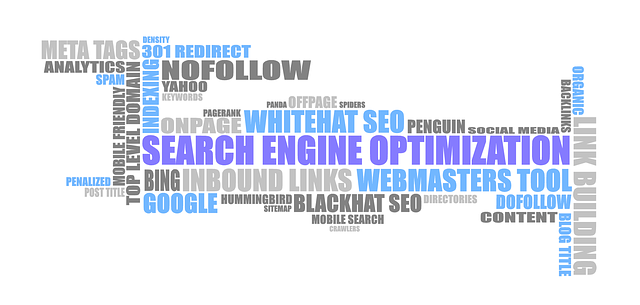Comprehensive SEO audits are essential for optimizing online presence, offering a detailed analysis of technical, on-page, and off-page SEO factors. By assessing website performance on search engine result pages (SERPs), identifying key traffic drivers, analyzing competitor strategies, and addressing technical issues, these audits guide content creators and marketers in enhancing user experience and boosting organic reach. They focus on fixing on-page SEO problems, refining keyword strategies, improving site structure, and ensuring high-quality, relevant content to ultimately drive long-term digital success.
In today’s digital landscape, a comprehensive SEO audit is indispensable for any content strategy aiming for visibility. This in-depth analysis goes beyond surface-level optimization, delving into on-page elements, keyword strategies, technical aspects, and content quality. By identifying areas for improvement, audits empower marketers to create targeted, effective strategies. From enhancing search rankings to boosting user experience, understanding the intricacies of a comprehensive SEO audit is the first step towards revolutionizing online presence.
Understanding the Purpose of SEO Audits

Comprehensive SEO audits are essential tools for any content strategy, serving as a thorough evaluation of a website’s performance and visibility online. These audits go beyond surface-level analysis by delving into various technical, on-page, and off-page aspects that impact search engine optimization (SEO). By conducting a comprehensive audit, businesses can uncover hidden issues, identify areas for improvement, and gain valuable insights into their target audience’s behavior and preferences.
Such audits provide a roadmap for content creators and marketers to enhance their digital presence. They help in understanding the current standing of a website on search engine result pages (SERPs), identifying keywords that drive traffic, analyzing competitors’ strategies, and pinpointing technical glitches that may hinder progress. With this knowledge, teams can optimize content, improve user experience, and ultimately boost organic reach, ensuring long-term success in the digital landscape.
Key Components of a Comprehensive SEO Audit

A comprehensive SEO audit is an essential step in understanding and optimizing your online content strategy. It involves a meticulous review of various factors that influence search engine rankings, ensuring your website aligns with best practices and current algorithms. Key components include analyzing keyword research to identify high-value keywords and assessing their integration within your content; evaluating on-page elements such as meta tags, headings, and content quality to ensure they are optimized for target keywords; and examining technical aspects like site speed, mobile-friendliness, and schema markup to enhance user experience.
Additionally, a thorough audit delves into backlink analysis, assessing the quality and quantity of incoming links from authoritative sources. This step is crucial in building a robust link profile, which signals search engines about your website’s authority and relevance. Furthermore, it involves an in-depth examination of competitor strategies to gain insights into successful SEO tactics and identify areas for improvement. By meticulously exploring these components, businesses can uncover hidden opportunities to boost their online visibility and attract the right audience.
Identifying On-Page SEO Issues

Comprehensive SEO audits are a crucial step in optimizing your content strategy. When conducting an audit, one of the key areas to focus on is identifying on-page SEO issues. These issues can often be overlooked but have a significant impact on search engine rankings. A thorough review involves analyzing various elements like meta titles and descriptions, header tags (H1, H2, etc.), keyword usage, and internal linking structure.
For instance, poorly optimized meta titles and descriptions can result in lower click-through rates from search results pages, while incorrect header tag hierarchy might confuse both search engines and users, signaling that your content is disorganized. Addressing these on-page SEO concerns can greatly enhance the visibility of your website, ensuring that your content is not only found but also perceived as valuable by both search algorithms and human visitors.
Analyzing Keyword Strategy and Research

Comprehensive SEO audits begin with a deep dive into keyword strategy and research. This involves understanding the target audience’s search behavior, identifying relevant keywords, and evaluating their effectiveness in driving organic traffic. By analyzing both short-tail and long-tail keywords, content strategists can uncover valuable insights about user intent and competitive landscapes.
Effective keyword research for comprehensive SEO audits includes tools like Google Keyword Planner, SEMrush, and Ahrefs. These platforms provide data on search volume, competition, and related keywords, enabling marketers to create well-informed content calendars. This strategic approach ensures that the content created aligns with what users are searching for, enhancing the site’s visibility and relevance in search engine results.
Evaluating Technical SEO Aspects

Comprehensive SEO audits are an essential step in evaluating a website’s technical health and optimizing its content strategy. This process involves scrutinizing various aspects, from site structure to indexing capabilities, ensuring that every element aligns with search engine guidelines. By delving into these technical intricacies, marketers gain valuable insights into areas that require enhancement, such as page speed optimization, mobile-friendliness, and secure connections (HTTPS).
Addressing these technical SEO aspects is crucial for improving a website’s visibility and performance in search results. A thorough audit identifies issues like broken links, duplicate content, or site navigation problems, which can hinder a site’s ability to attract and engage users. With these insights, content strategists can implement targeted improvements, enhancing the overall user experience while increasing the likelihood of ranking higher for relevant keywords.
Assessing Content Quality and Relevance

Comprehensive SEO audits are an essential step in evaluating content quality and relevance, which are pivotal for search engine optimization (SEO) success. Beyond basic keyword density analysis, a thorough audit delves into factors like readability, user engagement metrics, and alignment with target audience needs.
High-quality content not only uses relevant keywords effectively but also offers unique value, answers reader queries comprehensively, and encourages sharing and interaction. Relevancy ensures that content aligns with searcher intent, addressing their questions or problems. A successful audit identifies areas where existing content can be improved to better meet these criteria, ultimately enhancing website visibility and user satisfaction.
Measuring Website Performance and User Experience

Measuring website performance is a crucial aspect of any comprehensive SEO audit, as it provides valuable insights into user engagement and behavior. Tools like Google Analytics offer detailed analytics, allowing professionals to track key metrics such as page views, bounce rates, and average session duration. By analyzing these data points, content strategists can identify underperforming pages or areas that require optimization. For instance, a high bounce rate on a particular landing page might indicate that the content doesn’t align with user expectations, necessitating a rewrite or a change in strategy.
User experience (UX) is another critical factor in SEO success. A well-designed website with intuitive navigation and fast loading times encourages visitors to explore further, increasing the likelihood of conversions. Comprehensive SEO audits should include an evaluation of site speed, mobile responsiveness, and overall usability. Tools like PageSpeed Insights and Google’s Mobile-Friendly Test can help identify issues that negatively impact UX. By addressing these factors, content creators can enhance user satisfaction and encourage longer visits, which are essential for improving search engine rankings.
Creating an Actionable SEO Strategy Post-Audit

After conducting a comprehensive SEO audit, the next step is to translate the findings into an actionable strategy. This involves prioritizing areas for improvement based on the insights gained from the audit. Start by identifying low-hanging fruits—quick wins that can yield significant results with minimal effort. These might include optimizing meta titles and descriptions, improving site speed, or ensuring mobile responsiveness.
Create a roadmap that outlines specific tasks, responsible parties, and timelines. Integrate these changes into your content strategy, ensuring each piece of content is optimized for relevant keywords and aligned with user intent. Regularly monitor and analyze the performance of implemented strategies using SEO tools to track progress and make data-driven adjustments as needed.
